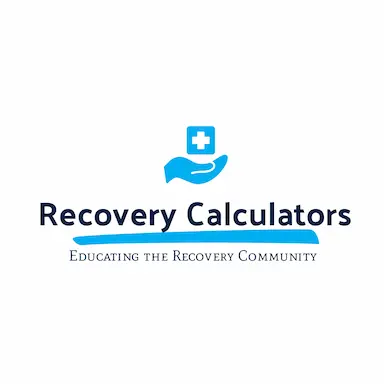Exploring All Our Addiction Calculators

Addiction can be challenging, but having the right tools can make a big difference. Addiction calculators are essential resources in the recovery process. These calculators help healthcare professionals assess and manage withdrawal symptoms and treatment effectiveness. Providing accurate data enables tailored treatment plans that boost successful recovery. For those involved in or considering rehab, knowing how these calculators function can provide deeper insights into their recovery journey. This article explores our range of calculators, shedding light on how they support effective addiction treatment. Introduction to Addiction Calculators Addiction calculators are critical tools used in the recovery process for individuals battling substance use disorders. These calculators provide objective data that help patients and healthcare professionals understand the severity and progress of addiction treatment. They are crucial in monitoring withdrawal symptoms, evaluating treatment effectiveness, and tailoring individual recovery plans. These calculators are important for several reasons: – Accuracy: They deliver precise assessments that aid in developing specific treatment strategies. – Monitoring: Regular use can track a patient’s progress and adjust plans as necessary. – Objective Measurement: They offer an unbiased view of a patient’s condition, essential for effective care. For example, when patients enter alcohol or drug rehabs, these calculators help healthcare providers create a baseline to start their treatment. Using these calculators, professionals can see which symptoms need immediate attention and which areas require longer-term strategies. This tailored approach improves the chances of successful recovery by focusing on each patient’s specific needs. Detailed Look at Key Calculators Three addiction calculators stand out for their specific roles in recovery assessments: CIWA, COWS, and SMAST. CIWA (Clinical Institute Withdrawal Assessment for Alcohol) This tool measures the severity of alcohol withdrawal symptoms. It evaluates areas like nausea, tremors, and anxiety. Healthcare providers use the CIWA to determine medication needs and monitor treatment effectiveness. This ensures that patients receive the right care to minimize discomfort and manage risks associated with withdrawal. COWSWS (Clinical Opiate Withdrawal Scale) This calculator helps track symptoms in patients withdrawing from opiates. It assesses factors such as sweating, restlessness, and muscle pains. By using COWS, medical professionals can offer timely responses to these symptoms, making the withdrawal process more manageable for patients. SMAST (Short Michigan Alcoholism Screening Test) SMAST is a screening tool for identifying potential alcohol use disorders. It consists of a series of questions that help detect problematic drinking patterns. Healthcare providers use SMAST to determine whether further evaluation or intervention is needed. These calculators are vital in creating effective treatment plans because they provide a structured way to evaluate and respond to withdrawal symptoms. The insights gained from these tools guide healthcare professionals in making informed decisions, resulting in better care and improved recovery outcomes. Exploring Other Essential Calculators Beyond the well-known CIWA, COWS, and SMAST, several other valuable calculators are crucial in the addiction recovery landscape. These lesser-known tools provide support across different aspects of rehabilitation, offering healthcare professionals and patients refined insights into treatment progress. One such calculator is the Alcohol Use Disorders Identification Test (AUDIT), which helps screen for harmful alcohol consumption. Another important tool is the Drug Abuse Screening Test (DAST), useful for identifying drug-related problems in various settings. Both calculators offer comprehensive questions that guide professionals in assessing potential substance use issues. Employing these calculators in different contexts, including luxury rehabs, elevates individuals’ care level. Luxury rehabs often have more resources to invest in advanced assessment tools, ensuring that treatment plans are tailor-made to the specific needs of their clients. This personalization level enhances the recovery programs’ effectiveness, encouraging positive outcomes. These tools serve essential functions throughout the rehab process: – Early Detection: Identify substance use issues early on. – Progress Monitoring: Track changes in behavior and health over time. – Treatment Adjustment: Provide data to adjust therapy methods for better results. Incorporating Calculators in Rehab Settings Many top rehabs in Scottsdale and Phoenix integrate these calculators into their treatment plans to boost recovery success rates. These facilities can offer a consistent and evidence-based approach to addiction treatment using such structured tools. This integration ensures that treatments are adaptive and responsive to changes in a patient’s condition. In the rehab environment, calculators like CIWA and COWS are often used daily to assess the current state of a patient’s withdrawal symptoms. This frequent monitoring allows staff to make informed decisions about medication adjustments and therapeutic interventions. By addressing symptoms as they arise, rehabs can provide more effective detoxification and reduce the risk of relapse. Furthermore, calculators help rehabs pinpoint specific areas where patients require more assistance, such as coping strategies or mental health support. This targeted care improves the rehab experience and outcomes, leading to more sustainable recovery paths. Conclusion The use of addiction calculators is pivotal in crafting effective and personalized treatment strategies for individuals overcoming substance use disorders. These calculators provide a foundation for understanding withdrawal symptoms and treatment needs, thus enhancing the care patients receive. Whether in renowned Scottsdale and Phoenix rehabs or luxury rehab centers, these tools remain integral to successful recovery planning. These calculators allow for precise monitoring and evaluation of patient progress as part of a comprehensive approach to addiction treatment. Recovery Calculators stand at the forefront, offering these valuable resources. Our tools are designed to empower professionals and patients alike, making strides towards profound and lasting recovery. Discover how our alcohol withdrawal calculators and other tools can aid your journey at www.alcoholwithdrawalcalc.com.
How Long Drugs Remain Detectable in Your Body

Navigating through the complexities of how drugs interact with and linger in the human body can be critical for those seeking recovery and for the professionals supporting them. At our core, we are dedicated to providing insightful, easily understandable information that aids in the crucial steps of detoxification and rehabilitation. Knowing the duration drugs stay in your body not only enhances awareness but also empowers individuals to make informed decisions about their path to recovery. In this article, we delve into the various aspects that affect drug retention times in the human body, including physiological factors, the nature of the drug itself, and external influences. By understanding these elements, we can better prepare for the detox process, setting a solid foundation for effective and sustainable recovery strategies. Whether you are a recovery advocate, health professional, or someone on the journey to sobriety, being equipped with this knowledge is pivotal in navigating the challenges of detoxification and withdrawal management. Overview of Drug Detection Times in the Human Body Understanding how long drugs remain detectable in your system is crucial for both managing detoxification processes and planning recovery strategies. Detection times can vary widely depending on the type of drug, dosage, and the testing method used. For instance, alcohol can be detected in the urine for up to 80 hours, while certain stimulants like cocaine might only show for a few days. Opioids, with their varied forms, can be detectable anywhere from a couple of days to over a week. These detection times are important for us to consider when using tools like the COWS (Clinical Opiate Withdrawal Scale) for opioid withdrawal management. By knowing how long a specific drug stays in the system, we adjust our approach to detox and rehab, ensuring that every individual has the best foundation for a successful recovery. Accurate detection times also help in avoiding false positives or negatives in drug testing, which is essential for the accuracy of diagnosis and subsequent treatment planning. Factors Influencing How Long Drugs Stay in Your System Several factors influence how long drugs linger in your body, affecting everything from the detectability in drug tests to the strategies necessary for effective detoxification. Metabolism plays a major role; individuals with a faster metabolic rate can process substances more quickly, reducing their window of detection. Body mass, age, and overall health also contribute significantly. For example, younger individuals with more muscle mass generally metabolize substances faster than older adults or those with less muscle. Additionally, the frequency and amount of drug use have a direct impact. Chronic users often find that drugs stay in their bodies longer due to the accumulation of substances in fatty tissues. The type of drug is another critical factor—fat-soluble drugs like marijuana can linger in body fat for weeks, while water-soluble drugs like methamphetamine may pass through the system more quickly. Understanding these factors helps us individualize detox and withdrawal management plans, ensuring they are as effective and comfortable as possible for our clients. Common Drugs and Their Detection Windows Let’s explore some frequently encountered drugs and their typical detection windows, which can significantly influence treatment approaches. Marijuana, often detected via urine tests, can show positive results anywhere from a few days, up to 30 days or more for chronic users. Cocaine, however, typically stays in the system for 1 to 4 days. Methamphetamine’s presence can generally be expected from 2 up to 10 days. And for opioids like heroin, you might expect them to be detectable for about 3 to 4 days in urine tests. Understanding these time frames is critical as we utilize specific scales like CIWA for alcohol withdrawal and COWS for opioid withdrawal, ensuring that our response is accurate and tailored to the physiological state of each client. These scales help us monitor and manage withdrawal symptoms systematically, which is vital for the safety and comfort of those in recovery. Tips for Safely Detoxifying Your Body Detoxifying from drugs is a significantly delicate phase of the recovery process. Essential to this process is hydration, maintaining a balanced diet rich in fruits and vegetables, and ensuring adequate rest, which collectively supports the body’s ability to expel toxins. We also recommend engaging in mild physical activity, which can help accelerate metabolism, aiding in quicker detoxification. Equally important is consulting healthcare professionals who can provide medical supervision. This is critical, especially when utilizing detox-specific tools and calculators like the ones we offer. Medical supervision ensures that the detox process is not only effective but also safe, considering withdrawal can sometimes lead to severe physical and psychological effects. Our professionals are trained to use these tools to monitor your progress and adjust care plans as needed, ensuring a personalized and supportive recovery journey. Conclusion At Recovery Calculators, we understand that knowledge is power, particularly in recovery. By providing you with essential information about drug detection times and tips for safe detoxification, we empower you and your loved ones to take informed steps toward lasting recovery. Remember, each journey toward recovery is unique, and personalization of treatment is key to success. If you or someone you know is seeking help and looking for drug rehab center in Phoenix, do not hesitate to reach out to us. Together, we can navigate the path to a healthier, drug-free life.
How CIWA Helps Track Alcohol Withdrawal

Alcohol withdrawal can be a tough experience for anyone trying to quit drinking. Knowing what to expect and how to handle symptoms can make a big difference in the recovery journey. That’s where the Clinical Institute Withdrawal Assessment, or CIWA, comes into play. This tool helps medical professionals track the severity of alcohol withdrawal and provide the best care possible. Using tools like CIWA is essential, especially in alcohol rehabs where precise care is crucial. These tools ensure that every patient receives personalized treatment based on their specific needs. In the next sections, we’ll explore what CIWA is, how it works, its benefits in alcohol rehabilitation, and how you can access it alongside other vital medical calculators. Keep reading to discover how this tool can make a significant difference in the path to sobriety. What is CIWA and Why is it Important? The Clinical Institute Withdrawal Assessment for Alcohol, known as CIWA, is a medical tool designed to help manage and track alcohol withdrawal symptoms. This scale is crucial for those undergoing detox to ensure their safety and comfort. Alcohol withdrawal can be unpredictable and sometimes severe, making it necessary to monitor symptoms closely. CIWA evaluates various symptoms of alcohol withdrawal, such as anxiety, nausea, tremors, and even hallucinations. By scoring these symptoms, healthcare providers can determine the severity of withdrawal and decide on the appropriate treatments. This helps in preventing complications like seizures or delirium tremens, which can be life-threatening if not addressed promptly. CIWA’s importance lies in its accuracy and ease of use. It provides a standardized way for medical professionals to assess and treat withdrawal symptoms. This ensures that every patient gets the care they need based on solid, measurable data. The consistency and precision of CIWA make it an essential tool in alcohol rehabs, enhancing patient safety and improving recovery outcomes. How CIWA Works: The Scoring System Explained The CIWA scale uses a scoring system to evaluate the severity of alcohol withdrawal symptoms. This system includes ten different criteria, each representing a common withdrawal symptom. These symptoms range from sweating and tremors to more severe issues like agitation and confusion. Each symptom is scored on a scale from 0 to 7, with higher scores indicating more severe symptoms. Healthcare providers use the total CIWA score to decide the next steps in treatment. For example, a low score might mean that the patient only needs oral medications and close monitoring. In contrast, a higher score could indicate the need for more intensive care or medication adjustments. The scoring system helps create a clear, objective picture of the patient’s condition, making it easier to provide tailored treatment. Here are the ten criteria evaluated in the CIWA scale: 1. Nausea and vomiting 2. Tremors 3. Sweating 4. Anxiety 5. Agitation 6. Tactile disturbances (like itching or burning) 7. Auditory disturbances (hearing things that aren’t there) 8. Visual disturbances (seeing things that aren’t there) 9. Headache or fullness in head 10. Orientation and clouding of sensorium (confusion about time, place, or person). Each of these symptoms is assessed independently, and their scores are added together to get the total CIWA score. This comprehensive approach ensures that every aspect of withdrawal is monitored, enabling quick and effective responses to any changes in the patient’s condition. This layer of precision and care is what makes CIWA such a valuable tool in managing alcohol withdrawal. Benefits of Using CIWA in Alcohol Rehabs Using CIWA in alcohol rehabs offers many benefits that help promote a safer and smoother recovery. One key advantage is the ability to provide personalized care. Because CIWA scores are based on individual symptoms, healthcare providers can tailor treatment plans to meet each patient’s specific needs. This means better outcomes and a higher chance of successful recovery from alcohol addiction. Another major benefit is the prevention of severe withdrawal complications. Untreated alcohol withdrawal can lead to dangerous conditions like seizures or delirium tremens. By tracking symptoms closely with the CIWA scale, medical staff can intervene quickly to prevent these complications. Early intervention helps keep patients safe and reduces the risk of life-threatening issues during detox. CIWA also enhances communication between healthcare providers. The standardized scoring system makes it easy to share information about a patient’s condition. Whether you’re in a luxury rehab, a hospital setting, or a local Phoenix or Scottsdale rehab, clear communication ensures that everyone on the medical team is on the same page. This coordinated approach leads to better care and a more efficient recovery process. How to Access CIWA and Other Medical Calculators Accessing CIWA and other medical calculators can be straightforward, especially with online resources like Recovery Calculators. These tools are readily available and can help both healthcare professionals and those in recovery. With just a few clicks, you can find accurate and easy-to-use calculators designed to assess and manage various aspects of addiction and withdrawal. To use CIWA, you can visit specialized websites that offer this calculator for free. These platforms typically provide a user-friendly interface where you can input symptoms and get an immediate score. This instant access to CIWA helps you stay informed and prepared for any potential withdrawal issues. Apart from CIWA, several other calculators are available to support addiction recovery. Tools like COWS (Clinical Opiate Withdrawal Scale) for opioid withdrawal and SMAST (Short Michigan Alcoholism Screening Test) for alcohol dependence can be equally beneficial. Knowing how to use these tools can empower you or your loved ones to take control of the recovery journey. These calculators provide valuable insights that contribute to a safer and more effective rehab experience. Conclusion Monitoring alcohol withdrawal is crucial for safe and effective recovery, and CIWA is a proven tool to track and manage symptoms. It scores symptoms, provides accurate data for personalized care, and helps prevent severe complications. This practical tool also fosters better communication among healthcare providers, making the whole treatment process more efficient. Access to other medical calculators like COWS and SMAST along with CIWA can further support your recovery efforts.
Exploring All Our Addiction Calculators and Their Benefits

Addiction recovery is a challenging journey that requires comprehensive tools to manage withdrawal and assess progress effectively. Medical calculators are essential in this process, offering precise measurements and helping healthcare providers tailor treatment plans. Our addiction calculators, including CIWA, COWS, and SMAST, provide reliable and actionable insights, making the recovery process safer and more efficient. Accurate assessment of withdrawal symptoms is crucial for timely interventions. For patients dealing with alcohol withdrawal, the Clinical Institute Withdrawal Assessment for Alcohol (CIWA) offers a structured way to monitor symptoms. Similarly, the Clinical Opiate Withdrawal Scale (COWS) is invaluable for managing opiate withdrawal. These tools enable healthcare providers to deliver personalized care, improving outcomes and reducing risks. In addition to CIWA and COWS, the Short Michigan Alcoholism Screening Test (SMAST) helps identify alcoholism early, allowing for prompt and effective treatment. Understanding and utilizing these calculators can make a significant difference in recovery from addiction. Let’s explore the benefits of each tool and provide a comprehensive overview of all the addiction calculators available on our website. Understanding the CIWA: Clinical Institute Withdrawal Assessment for Alcohol The Clinical Institute Withdrawal Assessment for Alcohol, or CIWA, is an essential tool for managing alcohol withdrawal symptoms. This scale helps healthcare providers measure the severity of withdrawal and decide on the best treatment options. It covers ten different symptoms, each scored to provide an overall picture of the patient’s condition. Symptoms monitored by CIWA include nausea, tremors, sweating, anxiety, and agitation, among others. Each symptom is rated on a scale, with higher scores indicating more severe symptoms. For example, nausea is rated from 0 (no nausea) to 7 (constant nausea, frequent dry heaves). The total score helps healthcare providers determine if medications are needed or if other interventions would be more appropriate. Using CIWA enables quick and accurate assessments, ensuring patient safety during the detox process. Regular monitoring helps in adjusting treatment plans, which can be crucial for preventing severe complications like seizures or delirium tremens. Plus, the CIWA tool helps in creating a more comfortable and supportive environment for those undergoing alcohol withdrawal, ultimately aiding in their recovery journey. COWS: Clinical Opiate Withdrawal Scale and Its Benefits The Clinical Opiate Withdrawal Scale, or COWS, assesses the severity of opioid withdrawal by tracking a range of symptoms. This tool helps healthcare providers manage and treat withdrawal symptoms effectively, ensuring a safer and smoother detox process. COWS evaluates 11 symptoms, including heart rate, sweating, restlessness, and gastrointestinal distress. Each symptom is rated on a scale, with the overall score indicating withdrawal severity. For instance, heart rate is rated from 0 (less than 80 beats per minute) to 4 (over 120 beats per minute). A higher total score suggests more severe withdrawal, necessitating immediate medical attention. One major benefit of using COWS is its ability to provide a clear, objective measure of withdrawal intensity. This makes it easier for healthcare providers to tailor treatment plans to the patient’s needs. Frequent assessments allow for timely adjustments to medications or other interventions, improving patient comfort and reducing risks. Not to mention, COWS is especially useful in settings such as luxury rehabs and drug rehab centers where personalized care is a priority. By closely monitoring symptoms like sweating, tremors, and anxiety, healthcare providers can ensure the patient receives the appropriate care. This systematic approach supports better outcomes in the challenging journey of recovering from opioid addiction. How the SMAST (Short Michigan Alcoholism Screening Test) Works The Short Michigan Alcoholism Screening Test, or SMAST, is a useful tool for identifying potential alcoholism. This test features a series of simple questions designed to uncover patterns of problematic drinking behavior. SMAST is straightforward to use. It consists of 13 yes-or-no questions. Each question focuses on different aspects of drinking habits and their impact on the individual’s life. For example, one question might ask if the person feels guilty about their drinking, while another might inquire if drinking has harmed relationships. Each “yes” answer scores a point, and a higher total score indicates a higher likelihood of alcoholism. This screening test helps both individuals and healthcare providers identify alcoholism at an early stage. Early identification is crucial for effective intervention and treatment. With this information, healthcare professionals can recommend appropriate resources, whether it’s enrolling in alcohol rehabs, attending counseling sessions, or exploring other treatment options. SMAST’s simplicity and effectiveness make it a popular choice for initial assessments. It’s an invaluable tool in the fight against alcoholism, providing a clear path towards identifying the problem and seeking timely help. Comprehensive Overview of All Our Addiction Calculators Our website offers a range of addiction calculators designed to aid in the assessment and management of withdrawal and recovery. Here’s a comprehensive overview of what each calculator does: 1. CIWA (Clinical Institute Withdrawal Assessment for Alcohol): Tracks the severity of alcohol withdrawal symptoms to guide treatment decisions. 2. COWS (Clinical Opiate Withdrawal Scale): Assesses the intensity of opiate withdrawal, helping to manage symptoms effectively. 3. SMAST (Short Michigan Alcoholism Screening Test): Identifies potential alcoholism through a series of yes-or-no questions. 4. AUDIT (Alcohol Use Disorders Identification Test): Another tool for detecting risky drinking behavior and potential alcohol dependence. 5. DAST (Drug Abuse Screening Test): Evaluates drug use patterns and identifies abuse or dependence issues. Each of these calculators serves a specific purpose, contributing to comprehensive care in various rehab settings. They offer invaluable insights for healthcare providers, allowing for individualized treatment plans that cater to the unique needs of each patient. These tools are especially helpful in luxury rehabs and specialized centers like Scottsdale rehabs or Phoenix rehabs. The detailed assessments empower healthcare professionals to offer the best care, ensuring a safer and more effective recovery process. Discover the Value of Our Addiction Calculators for Recovery Using addiction calculators like CIWA, COWS, SMAST, and others on our website provides essential support in managing withdrawal and recovery. These tools help healthcare providers measure symptoms accurately, tailor treatments effectively, and ensure patient safety throughout the detox process. Whether dealing with alcohol withdrawal, opiate
Fentanyl: What You Need to Know

Fentanyl is a powerful synthetic opioid that is much stronger than heroin and morphine. Originally developed for pain management in cancer patients, it is now widely misused, leading to a crisis of addiction and overdose deaths. Understanding what fentanyl is and how it is used can help protect yourself and your loved ones from its dangers. The rise of fentanyl use has led to increasing numbers of overdoses and fatalities. Even a small amount of fentanyl can be lethal, making it one of the most dangerous drugs on the streets today. Identifying the signs of fentanyl abuse and knowing how to respond to an overdose is crucial for saving lives. Recovery from fentanyl addiction is challenging but possible. With the right treatment and support, individuals can overcome addiction and work towards a healthier life. Detoxification, medical support, and aftercare are key parts of a successful recovery plan. By understanding the risks and learning about effective treatment options, you can take proactive steps to prevent fentanyl abuse and support those struggling with addiction. This article will provide essential information about fentanyl and explore ways to help those affected by this powerful drug. What Is Fentanyl and How Is It Used? Fentanyl is a synthetic opioid that was originally created for pain management, especially for cancer patients who need strong relief. It is many times more potent than other opioids like heroin and morphine, which means it can alleviate severe pain in very small doses. Doctors may prescribe it in various forms, including patches, lozenges, and injections. However, fentanyl’s high potency also makes it a target for misuse. It is often illegally manufactured and sold on the black market, sometimes mixed with other drugs like heroin or cocaine to increase potency. This mixing is particularly dangerous because users may not even realize they’re consuming fentanyl, leading to unexpected overdoses. Street names for fentanyl include “China White,” “Apache,” and “Tango & Cash.” Because of its potency, even a tiny amount can be deadly. The drug works by binding to the body’s opioid receptors, which control pain and emotions. Repeated use can lead to dependence and addiction rapidly, making it a highly dangerous substance. The Dangers and Effects of Fentanyl on the Body Fentanyl is extremely dangerous because of its high potency and the risk of overdose. Even a very small amount can cause life-threatening symptoms. The drug depresses the central nervous system, leading to slowed or stopped breathing, which can result in oxygen deprivation and death if not treated immediately. The effects of fentanyl on the body are numerous and severe. Physical symptoms of fentanyl use can include drowsiness, confusion, constipation, and nausea. In more extreme cases, it can lead to unconsciousness and respiratory failure. Because fentanyl is so potent, the margin between a “therapeutic” dose and a toxic dose is very small, increasing the risk of overdose significantly. Moreover, long-term use of fentanyl can lead to tolerance, where the user needs more of the drug to achieve the same effect. This often leads to increased use and higher risk. Chronic use can also damage the body over time, affecting organs and leading to various health issues. Withdrawal from fentanyl is also intense, requiring medical supervision and the use of tools like COWS (Clinical Opiate Withdrawal Scale) to manage detox safely. Understanding these dangers can help individuals make informed decisions and seek help before it’s too late. Recognizing and Handling Fentanyl Overdose Recognizing a fentanyl overdose early can save lives. Symptoms of an overdose include severe drowsiness, slow or difficult breathing, small pupils, and loss of consciousness. If you suspect someone is experiencing a fentanyl overdose, it’s important to act quickly. Here are the steps to take: 1. Call 911 Immediately: Time is critical in an overdose situation. Get emergency medical help right away. 2. Administer Naloxone: If available, naloxone (Narcan) can temporarily reverse the effects of the overdose. It helps restore normal breathing and wake the person up. 3. Provide Basic Life Support: While waiting for emergency services, perform CPR if the person isn’t breathing or doesn’t have a pulse. 4. Stay with the Person: Monitor their breathing and condition until help arrives. Try to keep them awake and alert. Healthcare professionals often use the COWS (Clinical Opiate Withdrawal Scale) to assess the severity of opioid withdrawal during and after an overdose. This helps in providing the necessary treatments and support. Detecting an overdose quickly and handling it appropriately can make the difference between life and death. Treatment Options and Recovery from Fentanyl Addiction Recovering from fentanyl addiction involves a comprehensive approach. Treatment usually begins with detoxification, where the body rids itself of the drug. Because of fentanyl’s potency, medical supervision during detox is essential. Tools like the COWS (Clinical Opiate Withdrawal Scale) are important to manage withdrawal symptoms safely. After detox, personalized treatment plans are developed. These can include: – Inpatient Drug Rehabs: Structured environments that offer 24/7 care and support for individuals. – Luxury Rehabs: Special facilities that provide high-end, comfortable settings for recovery, focusing on both mental and physical health. – Outpatient Programs: Allow patients to receive treatment while living at home, enabling them to maintain work or family obligations. Therapies such as CBT (Cognitive Behavioral Therapy), group therapy, and individual counseling are often part of treatment plans. These therapies help patients understand the root causes of their addiction and develop healthy coping mechanisms. Medication-assisted treatment (MAT) may also be an option. This involves using medications like buprenorphine or methadone to reduce cravings and withdrawal symptoms. Regular monitoring with medical tools like SMAST (Short Michigan Alcoholism Screening Test) can help ensure the effectiveness of the treatment. Conclusion Fentanyl is a powerful and dangerous drug with serious risks of overdose and addiction. Recognizing the signs of an overdose and knowing how to respond can save lives. Understanding the comprehensive treatment options available can guide you or your loved ones toward recovery. Recovering from fentanyl addiction requires a multi-faceted approach, including detox, therapy, and ongoing support. Tools like CIWA, COWS,
Morphine Milligram Equivalent Calculator: How To Use MME Tool

Learn how to use a morphine milligram equivalent calculator to safely calculate MME for prescribing opioids.
Emergency Department-Initiated Buprenorphine for Opioid Use Disorder (EMBED) Treatment

Discover the potential risks and interactions of combining Zoloft and alcohol. Learn about the effects and precautions for a safer mental health journey.
Brief Alcohol Withdrawal Scale: Tool for Withdrawal Management

Learn about the Brief Alcohol Withdrawal Scale (BAWS), its scoring criteria, and how it compares to CIWA for monitoring alcohol withdrawal symptoms.
Fentanyl Risks and How to Stay Safe

Fentanyl is a powerful synthetic opioid that is many times stronger than morphine. It’s often prescribed for severe pain management, particularly for cancer patients. However, due to its potency, fentanyl is also associated with high overdose risks and has become a significant factor in the opioid crisis. Understanding the dangers of fentanyl and how to stay safe is crucial for anyone who may come into contact with this drug, either medically or illicitly. The effects of fentanyl on the body can be severe and include respiratory depression, loss of consciousness, and even death. Recognizing these risks and knowing how to avoid exposure is essential for your safety. Tools like the Clinical Opiate Withdrawal Scale (COWS) can be invaluable for those undergoing treatment for fentanyl addiction, helping medical professionals monitor withdrawal symptoms and provide appropriate care. Let’s explore the various risks associated with fentanyl use, the physical and mental effects it has, and practical safety tips to avoid exposure. By understanding these aspects, you can take proactive steps to protect yourself and others from the dangers of fentanyl. Questions answered in this article: What are the risks of Fentanyl? How to stay safe from fentanyl risks? Our Alcohol Addiction Treatment Centers Scottsdale Rehab Luxury Personalized Rehab Take a Tour HART Rehab Holistic Luxury Personalized Rehab Take a Tour Scottsdale Detox Luxury Medical Detox Take a Tour Recovery is just one step away. Reach out and discover treatment options.. Call Now Get Help Understanding Fentanyl and Its Risks Fentanyl is a synthetic opioid that is approximately 50 to 100 times more potent than morphine. It’s commonly prescribed for severe pain but has also made its way into the illegal drug market, often mixed with other substances. Understanding the risks associated with fentanyl is essential for keeping yourself and your loved ones safe. One of the biggest risks of fentanyl is its high potential for overdose. Even a small amount can be lethal, especially when mixed with other drugs unknowingly. Because it is so potent, the margin for error is extremely slim. Fentanyl overdoses can lead to severe respiratory issues, loss of consciousness, and death if not treated immediately. Another risk is its addictive nature. Fentanyl binds to opioid receptors in the brain, leading to extreme pain relief and euphoria. However, regular use can quickly lead to dependence and addiction. Unlike other opioids, fentanyl’s strength heightens these risks, making it much more dangerous. Physical and Mental Effects of Fentanyl The effects of fentanyl on the body and mind can be severe. Physically, fentanyl can cause drowsiness, dizziness, and extreme fatigue. More severe effects include slowed breathing, which can be fatal, and severe constipation. Loss of consciousness and extremely shallow breathing are signs of an overdose and require immediate medical attention. Mentally, fentanyl use can lead to confusion, hallucinations, and erratic behavior. Users often experience a high that includes euphoria and a sense of well-being, but this quickly wears off, leading to a cycle of craving and dependence. Long-term use can result in mental health issues such as depression and anxiety, exacerbating the struggle with addiction. Using tools like the Clinical Opiate Withdrawal Scale (COWS) and the Clinical Institute Withdrawal Assessment for Alcohol (CIWA) can help monitor the withdrawal process. These scales measure symptoms to provide the necessary medical interventions, ensuring a safer detoxification and withdrawal experience. Understanding these physical and mental effects is crucial for recognizing the signs of fentanyl use and addiction. Early detection can lead to timely intervention, potentially saving lives by preventing long-term damage or fatal overdoses. Safety Tips to Avoid Fentanyl Exposure Staying safe from fentanyl exposure is essential, whether you are using prescription medications or trying to avoid illicit drugs. Here are some practical tips to keep in mind: 1. Properly Handle Prescriptions: Always follow your doctor’s instructions when taking prescribed fentanyl. Never take higher doses than prescribed and never mix with other substances without consulting your healthcare provider. 2. Be Aware of Slang Words: Knowing the street names for fentanyl can help you identify and avoid it. Some common slang terms include China White, Dance Fever, and Goodfella. 3. Educate Yourself on Sources: Be cautious of drugs bought off the street, as fentanyl is frequently mixed with heroin, cocaine, and other substances. This makes identifying pure products difficult and increases overdose risks. 4. Use Test Kits: If you suspect a substance might be laced with fentanyl, using a fentanyl test strip can help you detect its presence. This is especially important if you’re in an environment where illicit drugs are common. 5. Carry Naloxone: Naloxone is a medication that can reverse an opioid overdose. Keeping it on hand and knowing how to use it can save lives in emergency situations. Make sure that friends and family also know how to use it. 6. Stay Informed: Keeping up-to-date with current information on fentanyl and other drugs can help you stay aware of new risks and safety measures. Getting Help and Treatment for Fentanyl Addiction If you or someone you know is struggling with fentanyl addiction, seeking help is crucial. There are several treatment options designed to support recovery and ensure long-term health and well-being: 1. Detox Programs: Medical detox programs provide a safe environment to manage withdrawal symptoms. Using tools like the Clinical Opiate Withdrawal Scale (COWS) helps healthcare providers monitor and address symptoms effectively. 2. Therapy and Counseling: Individualized therapy, such as Cognitive Behavioral Therapy (CBT) and group counseling sessions, can help address the underlying issues of addiction. These therapies also teach coping skills that are essential for maintaining sobriety. 3. Medication-Assisted Treatment (MAT): MAT combines FDA-approved medications with counseling and behavioral therapies. This approach helps reduce cravings and withdrawal symptoms, aiding in the recovery process. 4. Luxury Rehabs: For those looking for a more comfortable and private environment, luxury rehabs offer high-quality care with additional amenities. These facilities often provide personalized treatment plans and a supportive atmosphere for recovery. 5. Local Resources: Depending on where you live, local rehab centers in cities like Scottsdale and
Addiction Calculators: How They Work

Addiction is a complex issue that affects millions of individuals and their families. Whether it’s alcohol, opiates, or other substances, identifying and treating addiction early is crucial for a successful recovery. To aid in this process, various medical calculators have been developed to assess the severity and impact of substance use. These tools are essential for both healthcare providers and those in recovery, as they provide a structured way to evaluate addiction and plan effective treatment. One of the foremost resources in this field is the range of addiction calculators we offer. These include tools like the Clinical Institute Withdrawal Assessment for Alcohol (CIWA), the Clinical Opiate Withdrawal Scale (COWS), and the Short Michigan Alcohol Screening Test (SMAST). Each of these tools serves a specific purpose in the recovery journey, helping to identify withdrawal symptoms, evaluate the need for medical intervention, and screen for alcohol misuse. In this article, we will break down the most widely used addiction calculators available on our platform. By understanding how these tools work, you can better grasp their role in guiding treatment plans and improving recovery outcomes. Whether you are seeking help for yourself or a loved one, knowing how to use these calculators can make a significant difference in the recovery process. Overview of Our Addiction Calculators Our addiction calculators are designed to help individuals and healthcare providers assess various aspects of substance use and withdrawal. By offering precise measurements, these tools guide the treatment and recovery process. Let’s take a closer look at three key calculators: CIWA, COWS, and SMAST. 1. CIWA (Clinical Institute Withdrawal Assessment for Alcohol): This tool is used to assess the severity of alcohol withdrawal symptoms, helping medical professionals determine the best treatment approach. It evaluates factors like nausea, tremors, and anxiety, providing a comprehensive score that indicates the level of medical intervention required. 2. COWS (Clinical Opiate Withdrawal Scale): COWS measures the severity of opiate withdrawal symptoms. It gauges physical and psychological symptoms including sweating, restlessness, and pupil size. The score helps clinicians decide on appropriate medication and detox strategies. 3. SMAST (Short Michigan Alcohol Screening Test): This tool screens for potential alcohol problems by asking a series of yes-or-no questions related to drinking behavior and its consequences. A high score indicates a need for further evaluation and possible intervention. These calculators serve as essential aids in drug and alcohol rehabs, especially in luxury rehabs where tailored and accurate assessments are vital for high-quality care. They allow for early intervention and precise treatment planning, making the recovery journey more effective and personalized. How the CIWA Tool Assesses Alcohol Withdrawal The CIWA tool is essential in assessing alcohol withdrawal symptoms, guiding detox and treatment plans. The tool consists of ten questions that evaluate the severity of symptoms like nausea, vomiting, tremors, sweating, anxiety, tactile disturbances, auditory disturbances, and visual disturbances. Each symptom is rated on a scale, and the total score determines the severity of withdrawal. Here’s a breakdown of how the CIWA tool works: – Mild Withdrawal (Score 0-9): This level usually indicates mild symptoms that may not require medication but still need monitoring. Simple measures like hydration and rest may be enough. – Moderate Withdrawal (Score 10-20): At this stage, symptoms are more pronounced and might require some medication. Monitoring is continuous, and a healthcare provider will decide the best course of action. – Severe Withdrawal (Score 21 and above): Severe symptoms require immediate medical attention, possibly in a hospital setting. This stage can include severe delirium tremens, hallucinations, and seizures, needing intensive care. Administering the CIWA tool involves a healthcare professional asking the patient to rate their symptoms. The process is repeated regularly to monitor changes and adjust the treatment accordingly. This regular monitoring is crucial in places like Scottsdale rehabs and Phoenix rehabs, where quality care involves constant assessment and timely interventions. In summary, the CIWA tool is a reliable way to measure alcohol withdrawal symptoms, helping to customize detox and recovery plans. Using it ensures that individuals receive the right level of care at the right time, making their recovery journey safer and more effective. Understanding the COWS Scale for Opiate Withdrawal The Clinical Opiate Withdrawal Scale (COWS) is an important tool for assessing the severity of opiate withdrawal symptoms. This tool helps healthcare providers understand how intense a person’s withdrawal symptoms are and decide the best treatment plan. COWS evaluates a variety of symptoms, from physical signs to psychological distress. Here’s how the COWS scale works: – Heart Rate and Sweating: An increased heart rate and sweating are common in opiate withdrawal. The scale measures these symptoms to gauge the severity level. – Restlessness and Tremors: Patients often feel restless and may experience tremors. These symptoms are rated to help determine the overall withdrawal intensity. – Gastrointestinal Issues: Nausea, vomiting, and diarrhea are also part of the withdrawal process. By assessing these symptoms, healthcare providers can offer treatments to alleviate discomfort. – Psychological Symptoms: Anxiety, irritability, and depression are common during withdrawal. COWS scores these symptoms to ensure that both physical and mental health needs are addressed. Using the COWS scale involves asking the patient about their symptoms and observing physical signs. Each symptom is rated, and the total score helps determine whether the withdrawal is mild, moderate, or severe. This precise measurement is useful in drug rehabs, including luxury rehabs, where tailored treatments are key to effective recovery. Understanding the COWS scale ensures that opiate withdrawal is managed safely and effectively. This tool is vital for creating a supportive environment during the detox and recovery process, helping individuals move towards long-term sobriety. The Role of SMAST in Alcohol Screening and Recovery The Short Michigan Alcohol Screening Test (SMAST) is a quick and reliable way to screen for alcohol use problems. This tool consists of 13 yes-or-no questions that cover various aspects of drinking behavior and its impact on the person’s life. The SMAST is often used in alcohol rehabs to identify individuals who need more in-depth assessment and treatment. Key

